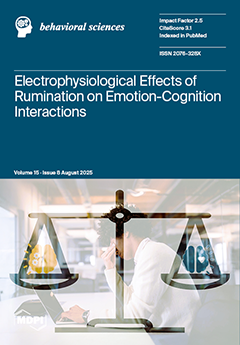Research on food-related behaviors has increasingly focused on orthorexia nervosa, but the underlying mechanisms are not fully understood, especially with the rise of new types of healthy foods. This study examines the associations between orthorexic tendencies, as measured by the Orthorexia Nervosa Inventory
[...] Read more.
Research on food-related behaviors has increasingly focused on orthorexia nervosa, but the underlying mechanisms are not fully understood, especially with the rise of new types of healthy foods. This study examines the associations between orthorexic tendencies, as measured by the Orthorexia Nervosa Inventory and ORTO-R, and scores on the Food Neophobias Scale, attitudes toward novel foods, body shape concerns, as assessed by the Body Shape Questionnaire, and drive for muscularity, training adherence, and anabolic steroid use, as measured by the Drive for Muscularity Scale. A total of 306 participants (68.3% female; Mage = 35.4 years, SD = 13.7), who were at least 18 old and fluent in Italian, took part in an online, anonymous data collection. The results revealed mixed associations between ON and the perceived attractiveness or intention to consume novel foods. In contrast, no relationship was found between orthorexia and food neophobia. Additionally, orthorexic dimensions were correlated with greater body shape dissatisfaction (r-scores ranging from 0.44 to 0.52,
p < 0.001) and a drive for muscularity (r-scores ranging from 0.43 to 0.57,
p < 0.001). Notably, orthorexic scores showed significant positive correlations with thoughts about anabolic steroid use (r-scores ranging from 0.26 to 0.60,
p < 0.001) and training adherence (r-scores ranging from 0.39 to 0.53,
p < 0.001) in a subsample of people who regularly exercise. Of examined the predictors, body shape concerns and thoughts about anabolic steroid use (ß ranging from 0.21 to 0.55, and R
2 ranging from 0.43 to 0.57,
p < 0.001) were the most robust predictors of orthorexic tendencies. Overall, the findings highlight the complex relationships between orthorexic tendencies, perceptions, and attitudes, as well as body-related concerns, while also providing new insights into their connection to novel foods.
Full article






